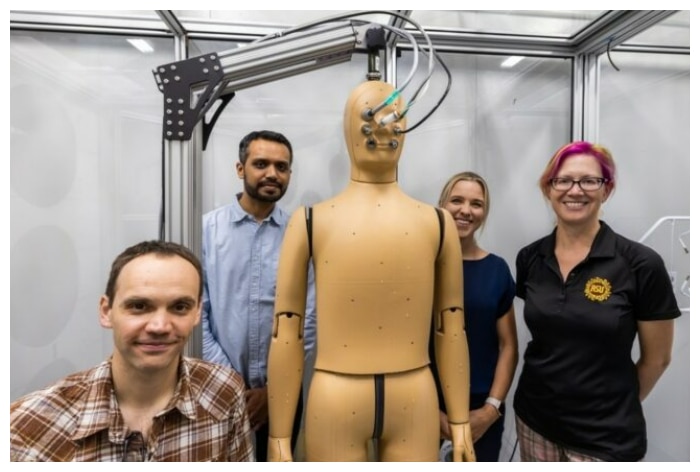Developed by a team at the Arizona State University (ASU), the robot called ANDI can mimic the thermal functions of the human body.

New York: Scientists, including one of Indian-origin, have developed the world’s first outdoor breathing, sweating and walking thermal robot that will help researchers better understand how our human bodies are impacted by heat stress.
Developed by a team at the Arizona State University (ASU), the robot called ANDI can mimic the thermal functions of the human body and has 35 different surface areas that are all individually controlled with temperature sensors, heat flux sensors and pores that bead sweat.
It was housed in a heat chamber to better understand the human body’s response to extreme heat.
“ANDI sweats; he generates heat, shivers, walks and breathes,” said Konrad Rykaczewski, associate professor at the ASU’s School for Engineering of Matter, Transport and Energy.
“There’s a lot of great work out there for extreme heat, but there’s also a lot missing. We’re trying to develop a very good understanding (of how heat impacts the human body) so we can quantitatively design things to address it.”
Around the globe, 10 ANDI manikins currently exist, mostly owned and used by athletic clothing companies for garment testing, but ASU’s ANDI is only one of two used by research institutions and it’s the first thermal manikin in existence that can be used outdoors, enabled by a unique internal cooling channel.
The research comes as the US is experiencing deadly heatwaves. In the coming decades, every region in the US is expected to experience higher temperatures and more intense heat waves.
Inside ANDI’s heat chamber, researchers can simulate heat-exposure scenarios from different places around the globe. Dubbed the “Warm Room,” the heat chamber is outfitted with advanced technologies that control the wind, temperature up to 140 degrees Fahrenheit and solar radiation. ANDI is also built with internal cooling channels that circulate cool water throughout its body, which enable it to stay cool enough to withstand extreme heat while measuring complex variables that contribute to our perception of heat in different environments — solar radiation from the sun, infrared radiation from the ground, and convection from the surrounding air.
ASU researchers can account for variations in body type and health characteristics to create and input into ANDI different customised thermal regulation models for almost anyone in the US.
“We can move different BMI models, different age characteristics and different medical conditions (into ANDI),” said Ankit Joshi, an ASU research scientist leading the modelling work and the lead operator of ANDI. “A diabetes patient has different thermal regulation from a healthy person. So we can account for all this modification with our customised models.”
With the data and information collected, researchers hope to design interventions, such as cooling clothes or exoskeletons for backpacks that are designed for cooling support.

Don’t Miss Out on the Latest Updates.
Subscribe to Our Newsletter Today!

Stay connected with us on social media platform for instant update click here to join our Twitter, & Facebook
We are now on Telegram. Click here to join our channel (@TechiUpdate) and stay updated with the latest Technology headlines.
For all the latest Technology News Click Here
